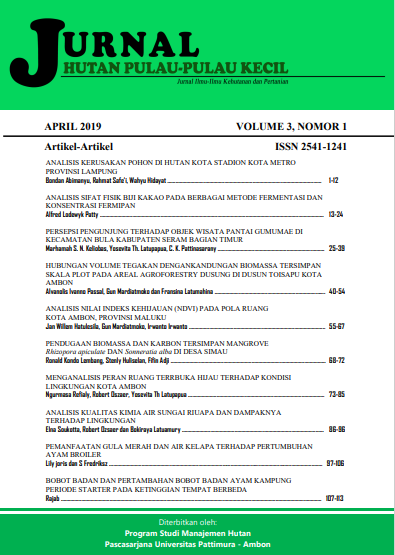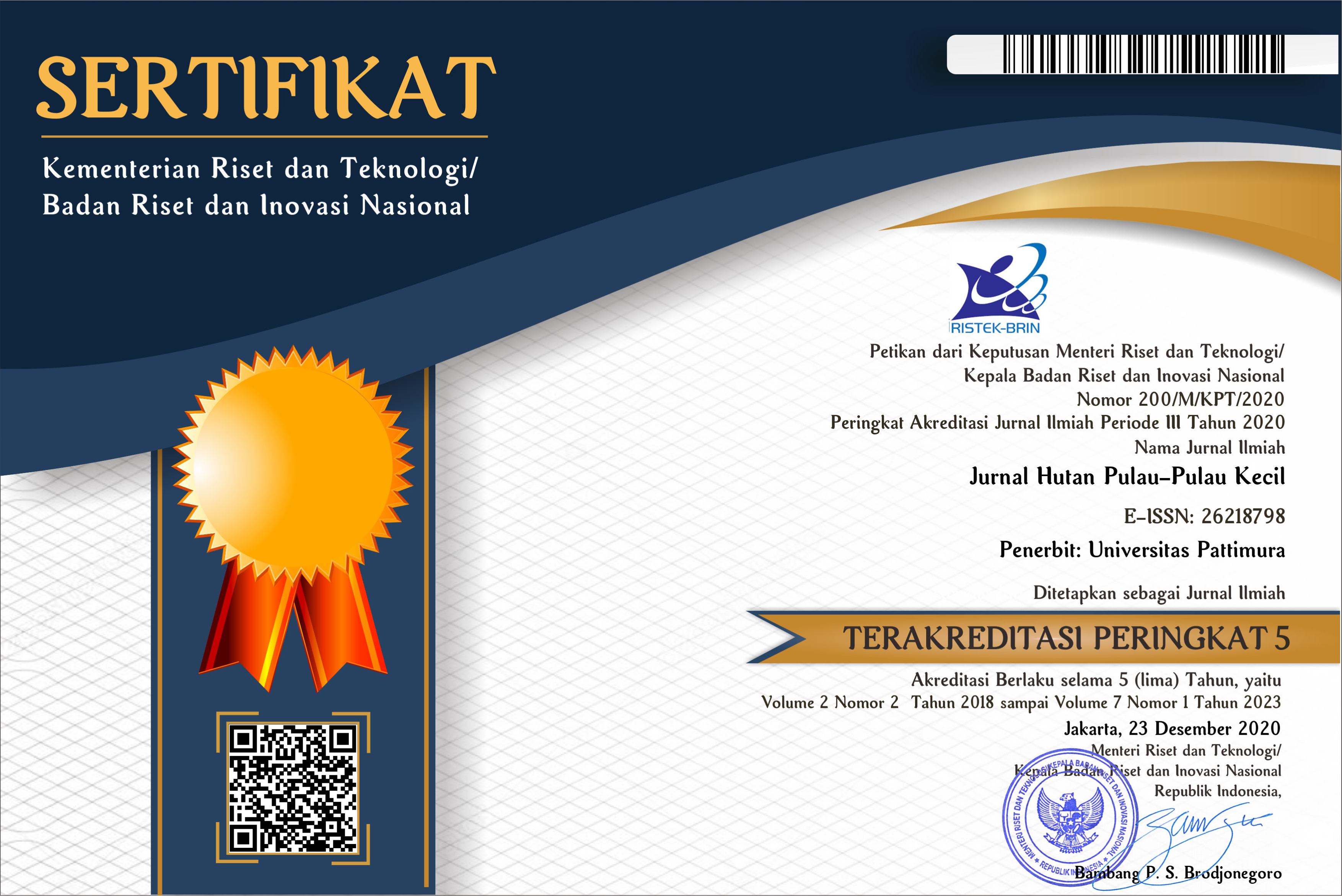ANALISIS SIFAT FISIK BIJI KAKAO PADA BERBAGAI METODE FERMENTASI DAN KONSENTRASI FERMIPAN
Abstract
This research was done to analyze physical properties of fermented cocoa beans using various fermentation methods and fermipan concentrations. The aim of this study was to identify effective fermentation methods to produce quality cocoa beans. For each trial 10 kg of fresh cocoa beans were treated with fermipan in concentrations 0.5% w/v and 1% w/v. Fermentation trials were conducted in wooden boxes, plastic baskets and in heaps without turning the materials. The trials were conducted aerobically at room temperature for the next 6 days (144 hours). The results showed that the cocoa bean temperature increased significantly the 24th hour of fermentation and then slowly decreased until the end of the fermentation period except for the beans in heaps. The highest temperature of 42oC was found in beans in wooden boxes using the 1% w/v fermipan concentration. During fermentation, the pH of the pulp increased according to the period of fermentation and reached a peak at 144 hour. The highest pH was 7.02 found in beans placed in plastic baskets with 1% w/v of fermipan concentration. Overall the cocoa beans which fermented in wooden boxes with 1% w/v of fermipan gave the best quality with shell content of 15.05 %, brown color intensity of 90%, unfermented beans 2%, insect infestation 1.14% and beans germinated 1.90%.
Downloads
References
Aikpokpodion P.E. and L.N. Dongo, 2010. Effects of fermentation intensity on polyphenols and antioxidant capacity of cocoa beans. Int. J. Sustain. Crop Prod. 5(4):66-70.
Badan Pusat Statistik, 2018. Statistik Kakao Indonesia 2017. © Badan Pusat Statistik, Jakarta.
Binh P.T, HoaiTram Tr.T, ThÆ°Æ¡ng N.V, Thao P.V, ThamHa Tr.T. and Hoang Anh Tr.T. 2012. Using invertase (Novozyme) in cocoa for improving bean quality and fermentation process in Vietnam. Journal of Agricultural Technology 8 (1): 93-102.
Camu, N.; Gonzalez, A.; De Winter, T.; Van Schoor, A.; De Bruyne, K.; Vandamme, P.; Takrama, J.5.; Addo, S.K.; De Vuyst, L. 2008. Influence of Turning and Environmental Contamination on the Dynamics of Populations of Lactic Acid and Acetic Acid Bacteria Involved in Spontaneous Cocoa Bean Heap Fermentation in Ghana Applied and Environmental Microbiology, Vol. 74, No.1, pp.86-98.
de Melo Pereira, G.V., Magalh~aes, K.T., de Almeida, E.G., da Silva Coelho, I., Schwan, R.F., 2013. Spontaneous cocoa bean fermentation carried out in a novel-design stainless steel tank: influence on the dynamics of microbial populations and physicalechemical properties. Int. J. Food Microbiol. 161, 121-133.
Gildemberg Amorim Leal Jr, Luiz Humberto Gomes, Priscilla Efraim, Flavio Cesar de Almeida Tavares & Antonio Figueira, 2008. Fermentation of cacao (Theobroma cacao L.) seedswith a hybrid Kluyveromycesmarxianus strain improved product quality attributes. FEMS Yeast Res 8: 788–798.
Kadow, D., Niemenak, N., Rohn, S., Lieberei, R., 2015. Fermentation-like incubation of cocoa seeds (Theobroma cacao L.) e reconstruction and guidance of the fermentation process. LWT - Food Sci. Technol. 62, 357-361.
Pereira, G.V. d. M., Miguel, M.G. d. C.P., Ramos, C.L., Schwan, R.F., 2012. Microbiological and physicochemical characterization of small-scale cocoa fermentations and screening of yeast and bacterial strains to develop a defined starter culture. Appl. Environ. Microbiol. 78, 5395-5405.
Supriyanto, 2009. Pasca panen dan pengolahan biji kakao. Bahan ajar. FTP,UGM. Yogyaarta.
Visintin, S., Ramos, C.L., Batista, N.N., Dolci, P., Schwan, R.F., Cocolin, L., 2017. Impact of Saccharomyces cerevisiae and Torulaspora delbrueckii starter cultures on cocoa beans fermentation. Int. J. Food Microbiol. 257, 31-40.
Wahyudi T., Panggabean R., dan Pujiyanto, 2008. Kakao, Manajemen Agribisnis dari Hulu Hingga Hilir. Penebar Swadaya, Jakarta.




